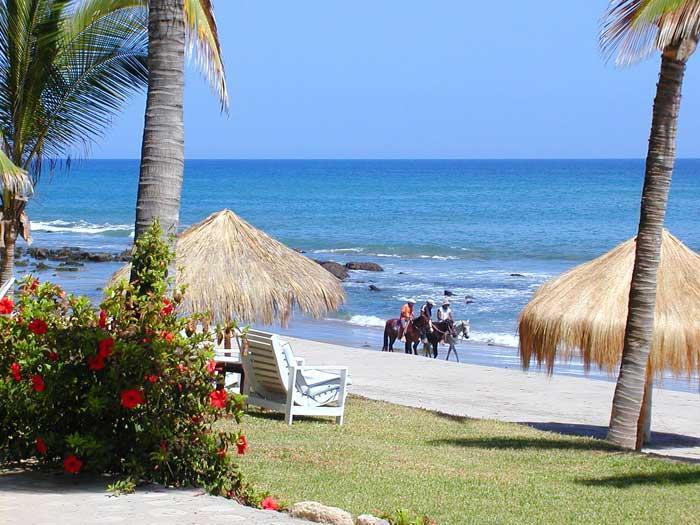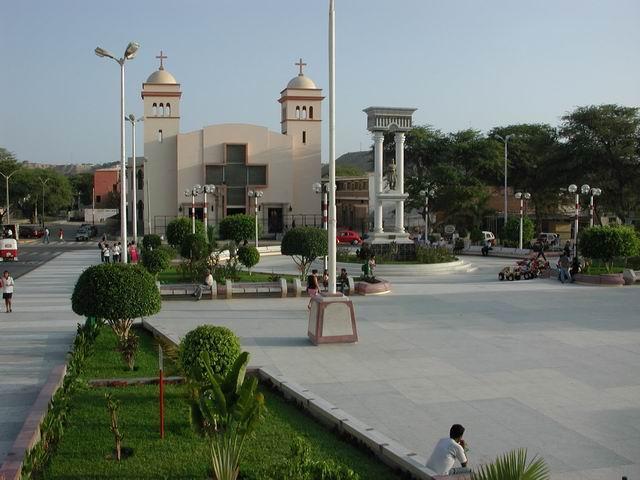Talara, Piura, Peru
Suggest Place to Visit
2490
Track to location with GPS |
 |
Talara is one of the provinces with the highest oil production in the country, which in the 60s of the 20th century, produced more than 90% of Peruvian oil.
The city is home to the Talara refinery and the most important crude storage plants on the north coast of Peru.
In the province of Talara, numerous oil fields are exploited by the state with the state-owned company PetroPerú and also under the form of contracts with third parties. These activities produce the majority of jobs for its inhabitants, promoting their social and economic development, being therefore the main source of income for the region and the engine of its economic activity.
Likewise, the city of Talara has the ports of Cablo Blanco and San Pedro, which host a large fishing fleet, which provides marine resources, which are the raw material of the delicious fish-based dishes that are prepared in the various restaurants and in homes.
Talara is a city in northwestern Peru, capital of the Province of Talara (Department of Piura), located on the shores of the Pacific Ocean. Land of desert planks and dense carob forests.
The province of Talara is located in the northwestern part of the department of Piura.
Its territory limits, to the north, with the department of Tumbes and the Pacific Ocean. It was created by law No. 12649 of March 16, 1956.
Its capital is the province of Talara and it is made up of the districts of El Alto, La Brea, Lobitos, Los Órganos and Máncora. The provincial capital is the district with the largest territorial extension with 1,116.90 km², followed by the Districts of La Brea with 692.96 km², and El Alto with 491.33 km². The district located at the highest altitude is El Alto, which is at 275 meters above sea level.
Talara has many tourist attractions, the most outstanding being its beautiful and welcoming spas along its coasts.
The tropical climate, the friendliness of its people and its beaches make it the preferred tourist destination in the whole country, especially in the summer season, which in the months of December to February, can reach up to 38 ° C.
• Balneario de Máncora: located on the edge of the Panamericana Norte highway, one hour from Tumbes and 45 minutes from the city of Talara. Its main attraction is its waters, which are warm and crystalline, and also the quality of its waves, which are excellent for surfing. Mancora directly manages Vichayito beach, making it part of the beach circuit of this resort.
The Balneario de Máncora is the preferred destination for visitors, both in the area and in the country, especially to welcome the New Year with numerous fun activities, hence the well-known slogan ´´Are you ready for a northern spree? ´´.
• Playa Punta Arenas: private beach within the exclusive area of the same name where the IPC (International Petroleum Company), and later Petroperú, housed its main employees, executives and supervisors. The roughness of the sea makes Punta Arenas very suitable for surfing. Access is restricted, but once inside, the visitor feels that they are in a world totally isolated from the rest of the city.
• Cabo Blanco Beach: Cabo Blanco beach is located 40 kilometers north of Talara.
Cabo Blanco is ideal for surfing and sport fishing (merlin and tuna), its waves, especially between November and December, are ideal for this sport. The frequency of its waves is directly related to the floods coming from the north (generated in the north pole and passing through Hawaii). Due to its very favorable natural conditions, it has a very rich ichthyofauna. The characteristics of the sea are reflected in abiotic factors (water temperature, current marine climate, etc. As in biotic factors (fauna and flora).
The access to Cabo Blanco, reaching Talara, goes to the district of EL ALTO, from here you take the road to the west. Going down steep hills, from where you can see the majesty of its waters, clean beaches and the cape (hill) that juts out to the sea. If the visitor arrives at night, they will appreciate a forest of illuminated marine platforms that reflect the phosphorescence of the sea and boats with their lights that give an unforgettable night show.
• Punta Balcones Beach: it is the westernmost end of South America, located in the district of La Brea Negritos, 12 km south of Talara, department of Piura.
The action of erosion agents have created various forms in its relief. Punta Balcones constitutes a promontory and is the habitat of sea lions.
The visitor can arrive by the Talara road - to the city of Negritos Negritos, heading for a distance of 1 km, passing the fishermen's cove of San Pablo, he will climb the promontory that has a height of 80 meters above sea level and will be able to observe the family of wolves sailors of all sizes, who barely poke their snouts over the rocks to huge brown-skinned specimens.
Between the lighthouse (Punta Pariñas) and Punta Balcones is the beach that has a crescent shape and its waters are crystal clear with excellent waves with strong breakers. Here, as in Máncora, the Hawaiian board is practiced.
• Las Capullanas Beach: (15 km from Talara), to enjoy tranquility and peace. This beach is believed to possess relaxing energies. You can also find animal shapes carved into the rocks on this beach.
• Malacas Beach: (next to the Fertilizers complex), it is small, with rocky areas, but very quiet with crystal clear waters.
• Playa Lobitos: (next to the Lobitos Military Camp), it is located 18 km north of Talara in the Pariñas district. Sandy, flat, with a regular break, good conditions for bathers and surfing. In these, as in the other beaches in the area, the variation that occurs in the summer season in the direction of the current (towards the south) must be taken into account. In these, as in Balcones and Máncora, there is no safeguard. Only Cabo Blanco and Máncora have a medical post.
• Los Órganos Beach: it is located at the height of ´´km 1153´´ of the Panamericana Norte highway. Long and wide beach that takes its name from the nearby hill whose shapes, seen from the sea, look like two pipes from an organ.
It has a handmade dock, with white sail rafts that gives it a very curious appearance. After the pier there is a point called Veleros, which has a nice view over the sea. This beach can be accessed by land, through the Panamericana Norte highway, by interprovincial bus or car. Suitable for all types of vehicle.
• Pariñas Forest: it is a carob forest where species typical of the desert area live. Located 18 km east of Talara between the foothills of the Cerros De Amotape and the Coastal Desert of Talara.
• Cerros de Amotape: located between the departments of Tumbes and Piura, 50 km southeast of the city of Tumbes. At its limit, precisely the Cerros de Amotape, it is characterized by being fauna and flora. The main objective of the Cerros de Amotape National Park is to protect the representative samples of the biological diversity existing in the Equatorial Dry Forest and the Pacific Tropical Forest ecoregion.
It has several well differentiated life zones. The area is a key component of a biological corridor that ensures the conservation of the natural environments of the extreme north of Peru. In the 5 types of habitats present, 404 plant species have been registered, ranging from the wettest to the driest areas.
The fauna is varied and is represented by species typical of the equatorial dry forest and also by some from the Peruvian coastal desert, the Pacific tropical forest and the Andean mountain range.
• Whale fossil deposit: (El Alto), a petrified set of large whale remains.
• ´´Los Caballitos´´: (El Alto, Los Organos, Lobitos, Negritos) Machine used for oil extraction.
• Platform of the Continental Zócalo: (Negritos, Lobitos, El Alto), they extract oil in the sea.
• Talara Refinery: Petroperú's largest refinery, with more than 90 years, whose mission is to refine crude oil to obtain products such as liquefied petroleum gas (LPG), gasoline, oils, fats, etc.
Folklore [edit] Its customs and traditions are manifested in its various civic and religious most important festivals, highlighting its Catholic fervor. On the feast of San Pedro on June 29, a large number of devotees attend the procession of the Holy Fisherman and carry it out in the sea, carrying the Sacred Image by boat, conditioning
Comments
We don´t have yet any comments about:
Talara, City of Black Gold
Talara, City of Black Gold
Be the first to leave a comment as it is very important to inform other people
Outros locais a visitar
Within a radius of 20 km from:Talara, City of Black Gold
Playa de Mancora |
| 2,1 Km |
 |
Hotel reservation near Talara, City of Black Gold within a radius of 20 km
Why to book with BOOK HOTEL ALGARVE
The best prices
Our partnerships with the world´s largest operators offer research on the best market prices.
More options
At Rotas Turisticos you can book the hotel, buy the air ticket, book the transfer from the airport to the hotel and vice versa, book the local excursions, rent the car, take travel insurance and consult the places to visit and where to go.
Holiday Tips & Destinations
Hundreds of holiday destinations with all the options that allow you to easily choose the destination that best suits your dream vacation.
BOOK HOTEL ALGARVE
Links






